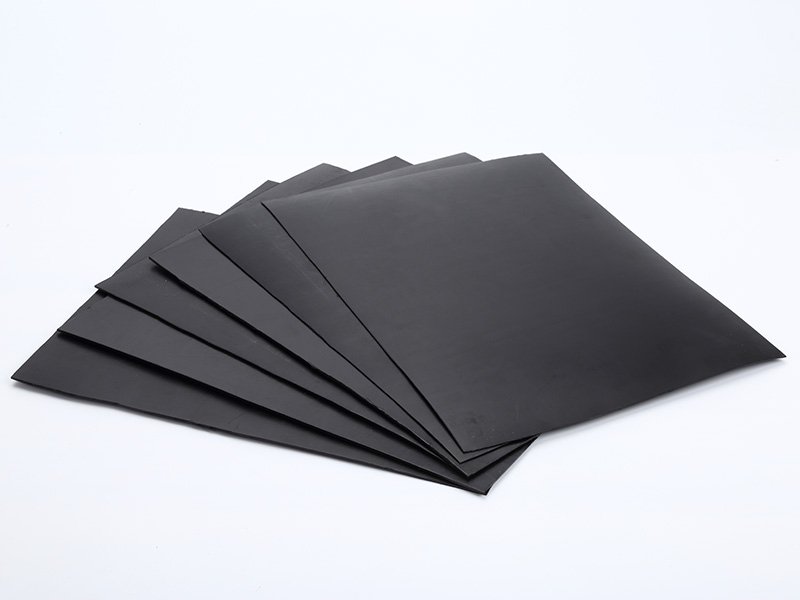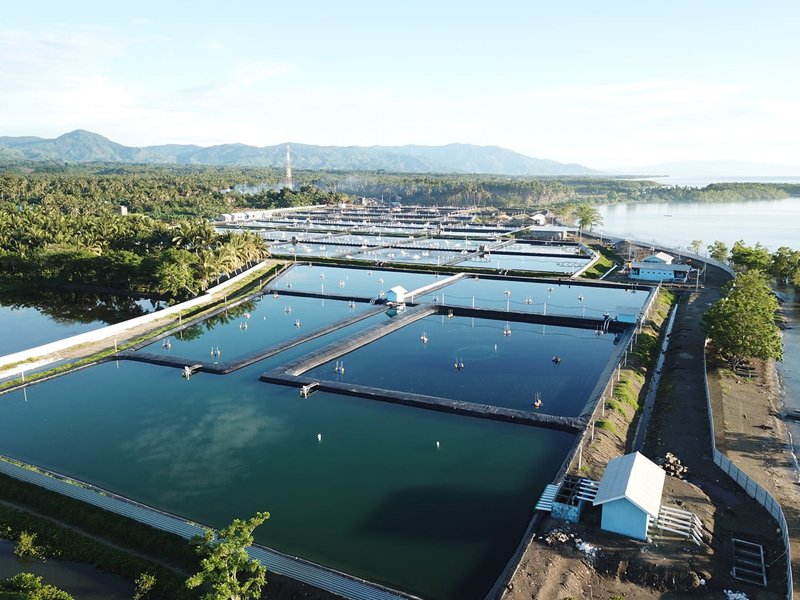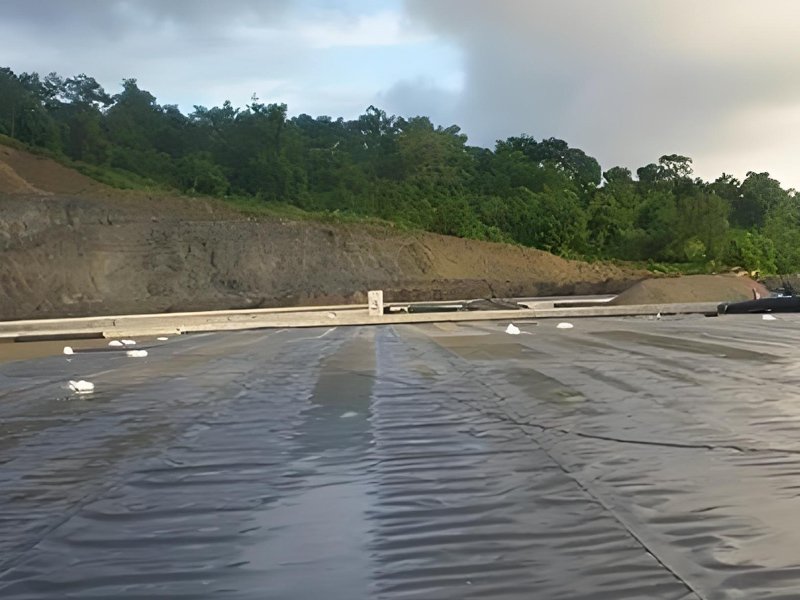Share:
LLDPE geomembrane, made from Linear Low-Density Polyethylene, is known for its flexibility, ease of installation, and strong performance. It plays a vital role in modern containment solutions, providing an excellent balance of flexibility, durability, and chemical resistance.
These geomembranes are versatile and effective for a wide range of containment and barrier needs. Their attributes make them ideal for applications spanning from environmental protection to industrial containment.
At BPM Geosynthetics, we offer high-quality LLDPE geomembrane liners with comprehensive specifications at competitive factory prices, ensuring you get the best solution for your containment projects.
An LLDPE geomembrane is a synthetic liner made from linear low-density polyethylene resin, engineered to prevent fluid and gas migration in geotechnical and environmental applications. Its molecular structure, characterized by short-chain branching, imparts flexibility and strength, making it suitable for various environmental and industrial uses. BPM LLDPE geomembrane manufactured through extrusion, it offers a density of 0.915–0.925 g/cm³, balancing flexibility and strength. Unlike its stiffer cousin, HDPE, an LLDPE geomembrane is designed for applications requiring adaptability to uneven surfaces and dynamic loads.
1.1 Composition and Manufacturing Process
Materials Used: LLDPE geomembranes are made from linear low-density polyethylene, a synthetic polymer known for its strength, durability, and flexibility. It is also resistant to chemicals, UV radiation, and tears.
Production Process: The manufacturing process involves extrusion, where the LLDPE resin is melted and formed into sheets. These sheets are then cooled and rolled for storage and transportation.
1.2 Types of LLDPE Geomembranes


| PROPERTIES | Test method | Unit | BPM50 | BPM75 | BPM100 | BPM150 | BPM200 | BPM250 |
| Thickness (minimum average) | ASTM D 5199 | millimeters | 0.5 | 0.75 | 1 | 1.5 | 2 | 2.5 |
| Thickness (lowest individual reading) | ASTM D 5199 | millimeters | 0.45 | 0.67 | 0.9 | 1.35 | 1.8 | 23 |
| Density (min.) | ASTM D 1505 | g/cm3 | 0.92 | 0.92 | 0.92 | 0.92 | 0.92 | 0.92 |
| Tensile properties (minimum average) | ASTM D 6693 | |||||||
| Strength at rest | kN/m | 14 | 20 | 27 | 40 | 55 | 66 | |
| Elongation at break | % | 800 | 800 | 800 | 800 | 800 | 800 | |
| Tear resistance (minimum average) | ASTM D 1004 | north | 50 | 70 | 100 | 150 | 200 | 250 |
| Puncture resistance (minimum average) | ASTM D 4833 | north | 120 | 190 | 250 | 370 | 500 | 620 |
| Carbon black content (minimum average) | ASTM D 1603 | % | 2 | 2 | 2 | 2 | 2 | 2 |
| Carbon black dispersion (minimum average) | ASTM D 5596 | Cat. 2 | Cat. 2 | Cat. 2 | Cat. 2 | Cat. 2 | Cat. 2 | Cat. 2 |
| Brittleness at low temperatures | ASTM D 746 | C | < -77 | < -77 | < -77 | < -77 | < -77 | < -77 |
| Oxidative induction time (OIT) (minimum average) | ASTM D 3895 | minutes | 100 | 100 | 100 | 100 | 100 | 100 |
| Melt flow index (190 °C, 2.16 kg) | ASTM D 1238 | grams/10 minutes | < 1.0 | < 1.0 | < 1.0 | < 1.0 | < 1.0 | < 1.0 |
| 2% module | ASTM D 5323 | kN/m | 210 | 370 | 420 | 630 | 840 | 1050 |
| Dimensional stability (100˚C, 1 hour) | ASTM D 1204 | % | ± 1 | ± 1 | ± 1 | ± 1 | ± 1 | ± 1 |
| Axisymmetric rupture deformation | ASTM D 5617 | % | 56 | 56 | 56 | 56 | 56 | 56 |
| Brittleness at low temperatures | ASTM D 746 | C | < – 77 | < -77 | < -77 | < -77 | < -77 | < -77 |
LLDPE geomembranes are engineered with a suite of features that make them stand out in containment applications. Understanding these characteristics helps engineers select the right material for their projects.
One of the hallmark features of LLDPE geomembranes is their flexibility. Unlike stiffer materials like HDPE, LLDPE geomembranes can stretch and conform to irregular subgrades, reducing the risk of tears during installation. This elasticity is critical in applications like landfill caps, where waste settlement can stress the liner.
LLDPE geomembranes resist a broad spectrum of chemicals, including acids, alkalis, and hydrocarbons. This makes them suitable for harsh environments, such as mining operations where liners are exposed to aggressive leachates. Their chemical stability ensures long-term performance without degradation.
With UV stabilizers, LLDPE geomembranes can endure prolonged sun exposure, making them viable for uncovered applications like ponds or reservoirs. They also withstand temperature fluctuations, maintaining integrity in climates ranging from scorching deserts to frigid tundras.
Despite their flexibility, LLDPE geomembranes are robust against punctures and tears. Performance tests, such as ASTM D5514 (large-scale hydrostatic puncture test), demonstrate their ability to withstand real-world stresses, such as sharp rocks or heavy equipment.
LLDPE geomembranes come in smooth, textured, or conductive varieties. Textured surfaces enhance friction for slope stability, while conductive layers enable leak detection. Thicknesses can be tailored to balance cost and durability, ensuring a fit-for-purpose solution.
LLDPE geomembranes can be prefabricated in controlled factory settings, producing large panels that reduce field welding. This feature streamlines installation, minimizes seams, and enhances quality control.
These features collectively position LLDPE geomembranes as a versatile, high-performance option for containment challenges.


The practical benefits of LLDPE geomembranes extend beyond their technical specifications, offering tangible advantages that drive project success.
LLDPE geomembranes excel in applications with dynamic conditions, such as landfill caps or mining pads, where settlement or deformation is expected. Their ability to elongate without breaking—demonstrated in multi-axial tensile tests (ASTM D5617)—reduces the risk of failure compared to rigid liners.
Prefabrication is a game-changer for LLDPE geomembranes. Large panels can be welded in a factory, reducing on-site labor and exposure to weather delays. This efficiency translates to lower installation costs and faster project timelines, a boon for budget-conscious managers.
LLDPE geomembranes are non-toxic and safe for applications like aquaculture or potable water storage. By preventing leaks, they safeguard soil and groundwater from contamination, aligning with regulatory standards and sustainability goals.
The durability of LLDPE geomembranes means fewer repairs over time. Their flexibility accommodates subgrade imperfections, and their chemical resistance minimizes degradation, ensuring long-term reliability with minimal upkeep.
From agriculture to waste management, LLDPE geomembranes adapt to diverse needs. They can line decorative ponds, cap hazardous waste sites, or contain brine in mining operations, offering a one-size-fits-many solution.
High-quality LLDPE geomembranes meet stringent standards, such as GRI-GM17 and ASTM, ensuring performance and reliability. Manufacturers like Solmax or GeoSolutions provide liners tested for tensile strength, tear resistance, and chemical compatibility, giving engineers confidence in their choice.
By leveraging these advantages, LLDPE geomembranes deliver value, performance, and peace of mind.
While both LLDPE and High-Density Polyethylene (HDPE) geomembranes serve similar functions, they differ in several key aspects:
The choice between LLDPE and HDPE geomembranes depends on specific project requirements, including environmental conditions, mechanical stresses, and installation considerations.
LLDPE geomembranes have been widely used in various applications due to their excellent flexibility, durability, and cost-effectiveness. Studies have shown that LLDPE geomembranes can retain their physical properties and perform satisfactorily even after 30 years of service. Their resistance to punctures, abrasions, and tears makes them suitable for the harsh conditions found in landfills and mining operations. Additionally, their flexibility allows for easy installation over uneven surfaces, making them ideal for applications such as landfill sites and irrigation ponds.


LLDPE geomembranes are utilized in a wide range of applications, including:
An LLDPE geomembrane lasts 20–40 years covered (e.g., landfills) and 10–20 years exposed (e.g., ponds). Soil cover ($0.10/m²) extends life by 15–20%.
Clear debris, lay a smooth subgrade, deploy prefabricated panels, and weld seams (10 kN/m, ASTM D6392). Geotextile underlayment prevents punctures .
Yes, with stabilizers, it retains 85% integrity after 1,600 UV hours, suitable for exposed uses. Covering boosts durability.
Yes, LLDPE is recyclable in non-hazardous applications, reducing waste by 80%. Check local facilities.
LLDPE ($0.40–$0.80/m²) is 20–30% cheaper than HDPE ($0.50–$1.00/m²), saving $1,000–$2,000 on 5,000 m², but HDPE lasts longer (50–100 years) .
LLDPE geomembranes are available in various thicknesses, typically ranging from 20 mil (0.5 mm) to 80 mil (2.0 mm), depending on application requirements.
Yes, LLDPE geomembranes formulated with UV stabilizers are suitable for exposed applications, offering resistance to ultraviolet degradation.
Installation involves deploying the geomembrane over a prepared subgrade, followed by seaming using thermal welding techniques to ensure a continuous, impermeable barrier.
LLDPE geomembranes are considered environmentally friendly due to their durability, chemical resistance, and ability to prevent contamination of soil and groundwater.
With proper installation and maintenance, LLDPE geomembranes can have a service life exceeding 20 years, depending on environmental conditions and application.
BPM Geosynthetics is a global leader and manufacturer of geomembranes engineered specifically for your containment systems. We offer complete range of best quality geomembranes at competitive factory price on fast delivery.
We are at your service in 24 hours/7 days. Any questions or inquiries, please contact us.
When you’re looking for geomembrane or geosynthetics products or services, we are always here repond to your quote as soon as possible.